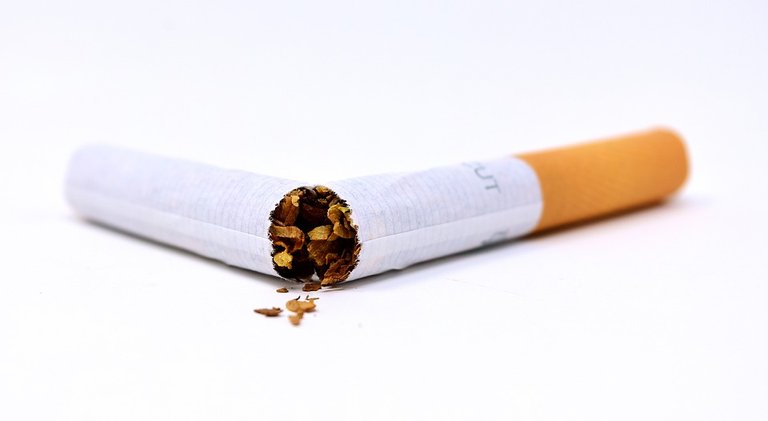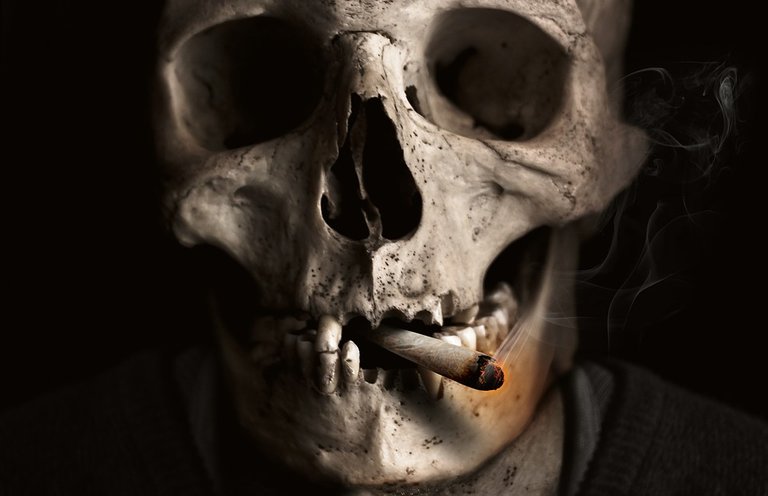Are you an active smoker addicted to cigarettes or are you a victim of passive smoking? Whether you belong to the first, second or both mentioned groups, your health is seriously jeopardized. Not only you can get ill, your budget will run out as well. Nicotine addiction can be deadly for you and everyone around you. Yellow fingers and teeth, unbearable breath, old-looking skin, brittle hair and nails – those are all consequences of tobacco consumption.
A smoker’s lungs are fertile ground for malignant diseases and the chronic obstructive pulmonary disease. Cough, constant feeling that you need to cough something out, shortness of breath and a headache are common issues for almost every smoker. Smoking symptoms are also nausea, dizziness, insomnia, dry mouth.

Due to the consequences of smoking in Europe, between 300,000 and 400,000 people die every year. More than 5 million smokers leave this world prematurely. Smoking is the cause of 60% of malignant illnesses of active and passive smokers.
Constant nicotine consumption can cause:
• mouth, vocal cords and gullet cancer
• lung, stomach and kidney cancer
• bladder cancer and womb cancer
• heart condition
• leukemia
These are just some of the consequences caused by smoking. Nicotine, tar and carbon-monoxide, which are the fundamental components of a cigarette, may also cause other harmful consequences.

The first steps in quitting
Choosing the best way to quit smoking is the first step you have to make. After you choose the way, you will succeed only if you are consistent. Be determined and stick to your chosen method firmly. It can save you from large expenses and premature death. As you already know, there are various means and ways to give up on nicotine. Some of those work better than the others. It would be best to choose the one you can comply with for yourself.
These are the techniques and the aids that can help you:
Sudden smoking cessation: About 50% of people who try to quit smoking do it without any external support – without aids, therapies or medicaments. Although most try to quit this way, it is neither the most efficient nor the most successful one. Only 4-7% of smokers are capable of quitting smoking on their own without suffering withdrawal symptoms. That is, to remain consistent with their plan and never feel the urge for nicotine again.
Behavioral therapy: It assumes working with a counsellor. The counsellor assists the smoker to find the way to quit smoking. With the counsellor’s aid, you can discover your triggers – emotions or situations which create the desire for a cigarette. The counsellor will design a plan with you. The purpose of this plan is to make you stronger when certain emotions overwhelm you or when you find yourself in an unpleasant situation.
Nicotine substitute therapy: They include nicotine chewing gums, nicotine patches, inhalers, sprays and lozenges. These provide you with nicotine without using tobacco. With these aids, you can stop consuming nicotine from cigarettes. They work best when you combine them with the aforementioned behavioral therapy. Support from friends and family is essential.
Medicaments: Certain prescription medicaments can help you to suppress craving for cigarettes. They will eliminate symptoms of quitting smoking such as: nervousness, irritability, depression, withdrawal.
Magnets: One of the most effective methods in fighting tobacco addiction is using the magnets (such as Nil Smoke magnets, for example). They are gold-plated magnets that work on the principle of stimulating acupuncture spots. That way, endorphin is secreted, creating the feeling of satisfaction, as if you consumed a cigarette. The advantages are that they are completely natural and you do not need a prescription for them. They are available to every user via the Internet. You do not use nicotine-replacement therapies with these magnets so you do not poison your lungs further. They help in 89% of cases, eliminating withdrawal symptoms and the cigarettes from your life once and for all.
Combination of methods: Combining methods – nicotine patches, chewing gums and sprays – can be more effective than using them individually.

Passive smoking is the silent killer, equally as dangerous as active smoking
Almost every person on this planet has been a victim of passive smoking. At some point in life it happens to all of us that we sit next to a passionate smoker. We notice it the moment the smoke from his cigarette starts smothering us. Control over the cigarette is in his hands. This is the point when we turn into passive smokers.
Passive smoking represents combined breathing of the smoke that a smoker exhales and the smoke of a lit up cigarette. The other type of smoke is also known as second-hand or environmental tobacco smoke. When someone lights up a cigarette, the smoke from the burning tip is released into the air. It can remain in the air up to two and a half hours, even when the window is open. Once it is gone, its particles are still present, even though we cannot see or smell them.
The dangers and the consequences of passive smoking
Scientific studies on passive smoking have shown how dangerous this secondary smoke really is. Small amounts of it can cause significant damage to human body. Here are some facts about passive smoking:
• Non-smokers exposed to second-hand smoke have an increased risk of lung cancer
• Non-smokers who live with a smoker are 50-60% more likely to develop lung cancer
• Passive smoking can cause premature death in non-smokers
• Passive smoking increases the risk of coronary heart disease by 40-65% - almost the same level as a smoke
• Second-hand smoke contains more than 7000 chemicals, with 69 cancer-causing chemicals
• There is no known safe level of exposure to second-hand smoke
But how can passive smoking be so damaging? After all, a non-smoker does not breathe in anywhere near as much tobacco smoke as a smoker.

The answers lie in the smoke that comes from a cigarette once it is burnt, with some evidence showing that:
• Smoke that burns off the end of a cigarette is more toxic than the smoke inhaled by a smoker
• Such smoke may get more toxic as it goes from fresh to stale
• Low doses of tobacco are all that is needed to trigger off a series of events that can lead to heart disease
• The effect of exposure for a few minutes to a few hours can be just as dangerous as chronic smoking on the heart
This tells us that breathing in second-hand cigarette smoke carries serious health risks. Frequent exposure to second-hand smoke may cause chest pain. Anybody who is not ready to quit smoking may at least reduce some of the impact of their smoking on those around them. It includes all people around us: our family members, friends, acquaintances or complete strangers.
✅ @stephan89, let me be the first to welcome you to Steemit! Congratulations on making your first post! I gave you a $.02 vote! Would you be so kind as to follow me back in return?